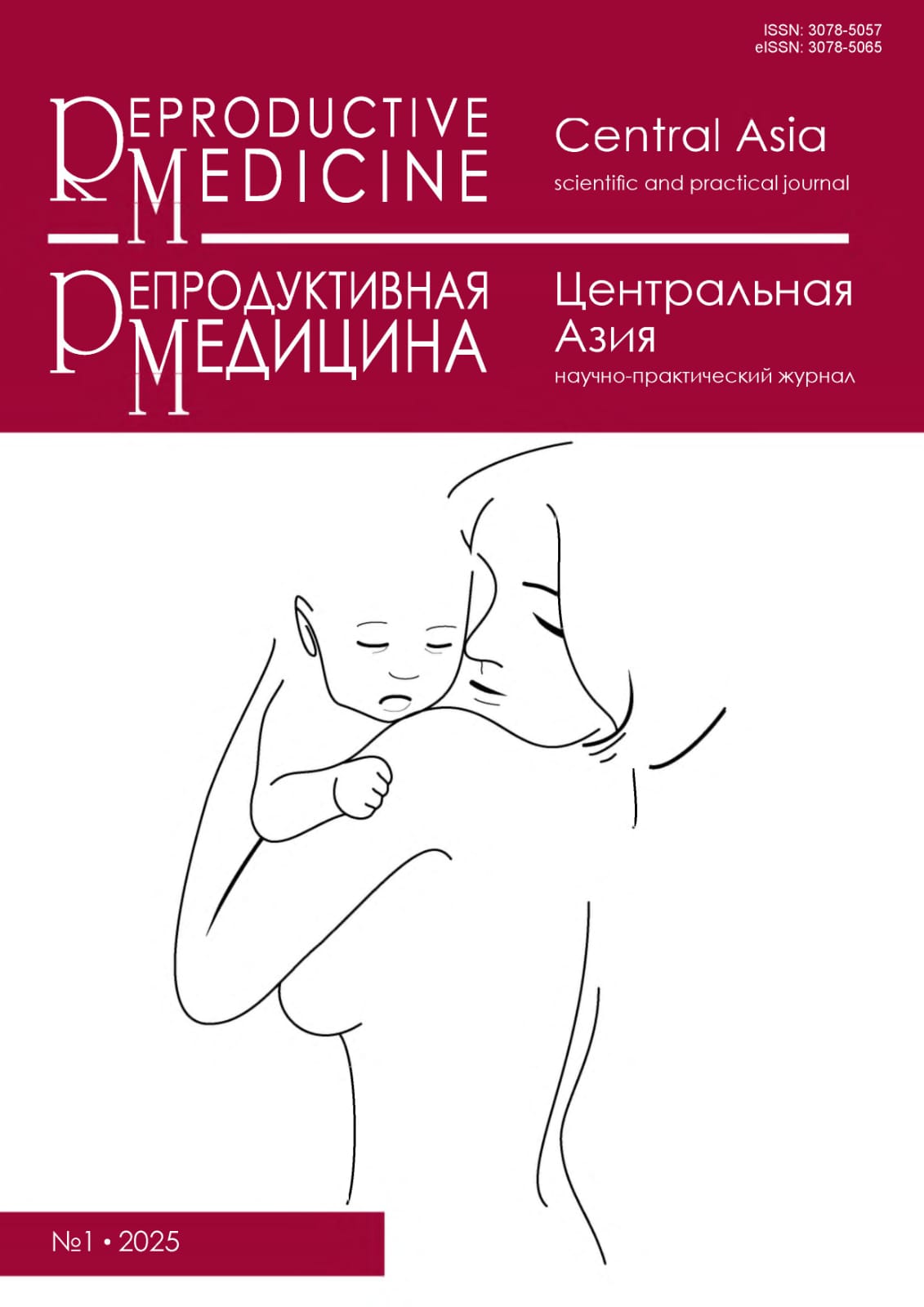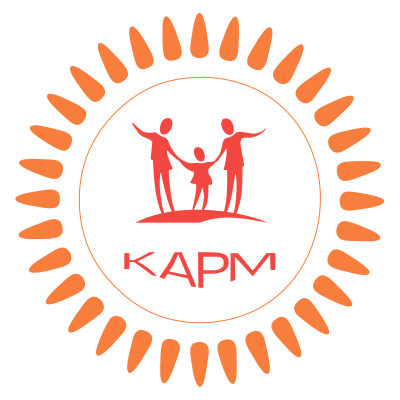Polycystic ovary syndrome: modern methods of treatment (A literature review)
DOI:
https://doi.org/10.37800/RM.1.2025.444Keywords:
polycystic ovary syndrome (PCOS), noninvasive treatment, innovative therapies, pharmacological drugs, surgical interventionsAbstract
Relevance: Polycystic ovarian syndrome (PCOS) is a widespread endocrine disorder that affects millions of women worldwide. This comprehensive review explores new treatments for PCOS, with a particular focus on physical methods, herbal approaches, holistic therapies, medical procedures, bacteriotherapy, and dietary supplements.
The study aimed to evaluate modern methods of treating polycystic ovary syndrome (PCOS), focusing on their effectiveness, safety, and prospects for clinical use.
Materials and Methods: A systematic literature search was conducted in reputable databases among sources published up to 2023. The search identified 33 articles that met the inclusion criteria, covering animal and human studies on PCOS and innovative treatments. The main focus of the assessment was on effectiveness and safety. The articles were divided into six groups: holistic therapy, phytotherapy, physical therapies, medical procedures, bacteriotherapy, and dietary supplements. The Cochrane risk of bias tool was used to assess the quality of randomized controlled trials, and the AMSTAR 2 tool was used to analyze the quality of systematic reviews.
Results: The review presents various interventions, from acupuncture, yoga, and herbal remedies to high-intensity ultrasound, ultrasound cavitation, probiotics, fecal microbiota transplantation, and dietary supplements. Notably, taking dietary supplements was associated with a positive effect on insulin resistance and androgen levels. The complexity of PCOS treatment highlights the need to develop strategies based on evidence-based medicine.
Conclusion: Although noninvasive and natural treatments look promising, thorough research is needed to assess their long-term safety and optimal clinical use. The integration of lifestyle changes, traditional methods, and innovative approaches can form the basis for comprehensive and effective PCOS treatment, giving hope to millions of women around the world. Due to the emergence of alternative treatment methods, caution should be exercised. It is still strongly recommended to consult with medical professionals to make informed decisions about PCOS therapy.
References
World Health Organization. Polycystic ovary syndrome [Internet]. World Health Organization. 2025. Available from:
https://www.who.int/news-room/fact-sheets/detail/polycystic-ovary-syndrome
Neven ACH, Laven J, Teede HJ, Boyle JA. A Summary on Polycystic Ovary Syndrome: Diagnostic Criteria, Prevalence, Clinical Manifestations, and Management According to the Latest International Guidelines. Semin Reprod Med. 2018;36(1):5-12. https://doi.org/10.1055/s-0038-1668085
Azziz R, Carmina E, Chen Z, Dunaif A, Laven JSE, Legro RS, Lizneva D, Natterson-Horowtiz B, Teede HJ, Yildiz BO. Polycystic ovary syndrome. Nat Rev Dis Primers. 2016;2(1):16057.
https://www.scholars.northwestern.edu/en/publications/polycystic-ovary-syndrome-4
Жылкичиева Ч., Тухватшин Р., Аскеров А. Синдром поликистозных яичников: современный взгляд на проблему. Вестник КГМА им. И.К. Ахунбаева. 2016;6:47-52 Zhylkichieva Ch, Tuxvatshin R, Askerov A. Sindrom polikistoznyx yaichnikov: sovremennyj vzglyad na problemu. Vestnik KGMA im. I.K. Akhunbaeva. 2016;6:47-52. Russian.
https://vestnik.kgma.kg/index.php/vestnik/article/view/872/927
Harris HR, Terry KL. Polycystic ovary syndrome and risk of endometrial, ovarian, and breast cancer: a systematic review. Fertil Res Pract. 2016;2:14.
https://doi.org/10.1186/s40738-016-0029-2
Панарина О.В., Рашидова М.А., Беленькая Л.В., Трофимова Т.А., Шолохов Л.Ф. Современные представления о патогенезе синдрома поликистозных яичников (обзор литературы). Acta Biomed Sci. 2017;2(4):9-14.
Panarina OV, Rashidova MA, Belenkaya LV, Trofimova TA, Sholokhov LF. Modern ideas about the pathogenesis of polycystic ovary syndrome (literature review). Acta Biomed Sci. 2017;2(4):9-14. Russian.
https://www.actabiomedica.ru/jour/article/view/404/405
Ramezani Tehrani F, Amiri M, Behboudi-Gandevani S, Bidhendi-Yarandi R, Carmina E. Cardiovascular events among reproductive and menopausal age women with polycystic ovary syndrome: a systematic review and meta-analysis. Gynecol Endocrinol. 2019;36(1):12-23.
https://doi.org/10.1080/09513590.2019.1650337
Teede HJ, Tay CT, Laven JJE, Dokras A, Moran LJ, Piltonen TT, Costello MF, Boivin J, Redman LM, Boyle JA, Norman RJ, Mousa A, Joham AE, International PCOS Network. Recommendations From the 2023 International Evidence-based Guideline for the Assessment and Management of Polycystic Ovary Syndrome. Human Reproduction. 2023;38(9):1655-1679.
https://doi.org/10.1093/humrep/dead156
Teede HJ, Misso ML, Costello MF, Dokras A, Laven J, Moran L, Piltonen T, Norman RJ; International PCOS Network. Recommendations from the international evidence-based guideline assessment and management of polycystic ovary syndrome. Fertil Steril. 2018;110(3):364-379.
https://doi.org/10.1016/j.fertnstert.2018.05.004
Misso ML, Tay CT, Teede H. Technical Report for the 2023 International Evidence-based Guideline for the Management of Polycystic Ovary Syndrome. Monash University Report; 2023. Available from:
https://bridges.monash.edu/ndownloader/files/41455206
Lizneva D, Suturina L, Walker W, Brakta S, Gavrilova-Jordan L, Azziz R Criteria, prevalence, and phenotypes of polycystic ovary syndrome. Fertil Steril. 2016;106(1):6-15.
https://doi.org/10.1016/j.fertnstert.2016.05.003
Lizneva D, Kirubakaran R, Mykhalchenko K, Suturina L, Chernukha G, Diamond MP, Azziz R. Phenotypes and body mass in women with polycystic ovary syndrome identified in referral versus unselected populations: systematic review and meta-analysis. Fertil Steril. 2016;106(6):1510-20.e2.
https://doi.org/10.1016/j.fertnstert.2016.07.1121
Mohammed SB, Shivananda SB Polycystic ovarian syndrome trend in a nutshell. Int J Womens Health Reprod Sci. 2017;5(3):153-157.
http://doi:10.15296/ijwhr.2017.28
Kataoka J, Larsson I, Björkman S, Eliasson B, Schmidt J, Stener-Victorin E Prevalence of polycystic ovary syndrome in women with severe obesity — Effects of a structured weight loss programme. Clin Endocrinol (Oxf.). 2019;91(6):750-758. https://doi.org/10.1111/cen.14098
Nehir Aytan A, Bastu E, Demiral I, Bulut H, Dogan M, Buyru F. Relationship between hyperandrogenism, obesity, inflammation and polycystic ovary syndrome. Gynecol Endocrinol. 2016;32(9):709-713.
http://DOI:10.3109/09513590.2016.1155208
Коркан А.И., Туреханова А.Д., Тюгай Ю.Л. Современные методы лечения синдрома поликистозных яичников (обзор литературы). Репродуктивная медицина. 2020;1(42):27-34.
Korkan AI, Turekhanova AD, Tyugai YL. Modern methods of treatment of polycystic ovary syndrome (literature review). Reprod Med. 2020;1(42):27-34. Russian.
https://doi.org/10.37800/rm2020-1-5
Zore T, Lizneva D, Brakta S, Walker W, Suturina L, Azziz R. Minimal Difference in Phenotype Between Adolescents and Young Adults With Polycystic Ovary Syndrome. Fertil Steril. 2019;111(2):389-396.
https://doi.org/10.1016/j.fertnstert.2018.10.020
Даренская М.А., Колесников С.И., Гребенкина Л.А., Данусевич И.Н., Лазарева Л.М., Наделяева Я.Г., Даржаев З.Ю., Никитина О.А., Базарова Т.А., Колесникова Л.И. Анализ про- и антиоксидантной активности крови у женщин с различными фенотипами синдрома поликистозных яичников и бесплодием. Акушерство и гинекология. 2017;8:86-91.
Darenskaya MA, Kolesnikov SI, Grebenkina LA, Danusevich IN, Lazareva LM, Nadelyaeva YaG, Darjaev ZYu, Nikitina OA, Bazarova TA, Kolesnikova LI. Evaluation of prooxidant and antioxidant blood activity in women with various phenotypes of polycystic ovary syndrome and infertility. Akusherstvo i ginekologiya. 2017;8:86-91. Russian.
https://doi.org/10.18565/aig.2017.8.86-91
Abdalla M, Deshmukh H, Atkin SL, Sathyapalan T. miRNAs as a novel clinical biomarker and therapeutic targets in polycystic ovary syndrome (PCOS): a review. Life Sci. 2020;259:118174.
https://doi.org/10.1016/j.lfs.2020.118174
Visser JA. The importance of metabolic dysfunction in polycystic ovary syndrome. Nat Rev Endocrinol. 2021;17(2):77-78.
https://doi.org/10.1038/s41574-020-00456-z
Адамян Л.В., Андреева Е.Н., Абсатарова Ю.С., Григорян О.Р., Дедов И.И., Мельниченко Г.А., Сутурина Л.В., Филиппов О.С., Шереметьева Е.В., Чернуха Г.Е., Ярмолинская М.И. Клинические рекомендации "Синдром поликистозных яичников". Проблемы эндокринологии. 2022;68(2):112-127.
Adamyan LV, Andreeva EN, Absatarova YS, Grigoryan OR, Dedov II, Melnichenko GA, Suturina LV, Filippov OS, Sheremetyeva EV, Chernukha GE, Yarmolinskaya MI. Clinical guidelines «Polycystic Ovary Syndrome». Problems of Endocrinology. 2022;68(2):112-127. Russian.
https://doi.org/10.14341/probl12874
Бахарева И. Роль вагинальной микробиоты в сохранении женского репродуктивного здоровья: обзор литературы (часть 1).
Репродуктивная медицина. 2022;1(50):52-59.
Bakhareva I. The role of vaginal microbiota in maintaining female reproductive health: a literature review (part 1). Reproductive Medicine. 2022; (1 (50): 52-59. Russian. https://doi.org/10.37800/RM.1.2022.52-59 23.
Бахарева И. Роль вагинальной микробиоты в сохранении женского репродуктивного здоровья: обзор литературы (часть 2).
Репродуктивная медицина. 2022;2(51):45-54.
Bakhareva I. The role of vaginal microbiota in maintaining female reproductive health: a literature review (part 2). Reproductive Medicine. 2022;2(51):45-54. Russian.
https://doi.org/10.37800/RM.2.2022.45-54 24.
Belenkaia LV, Lazareva LM, Walker W, Lizneva DV, Suturina LV. Criteria, phenotypes and prevalence of polycystic ovary syndrome.
Minerva Ginecol. 2019;71(3): 211-223.
https://doi.org/10.23736/S0026-4784.19.04404-6
Deswal R, Nanda S, Ghalaut VS, Roy PS, Dang AS. Cross-sectional study of the prevalence of polycystic ovary syndrome in rural and urban populations. Int J Gynaecol Obstet. 2019;146(3):370-379.
Downloads
Published
How to Cite
Issue
Section
License
Copyright (c) 2025 The rights to a manuscript accepted for publication are transferred to the Journal Publisher. When reprinting all or part of the material, the author must refer to the primary publication in this journal.

This work is licensed under a Creative Commons Attribution-NonCommercial-NoDerivatives 4.0 International License.
The articles published in this Journal are licensed under the CC BY-NC-ND 4.0 (Creative Commons Attribution – Non-Commercial – No Derivatives 4.0 International) license, which provides for their non-commercial use only. Under this license, users have the right to copy and distribute the material in copyright but are not permitted to modify or use it for commercial purposes. Full details on the licensing are available at https://creativecommons.org/licenses/by-nc-nd/4.0/.




